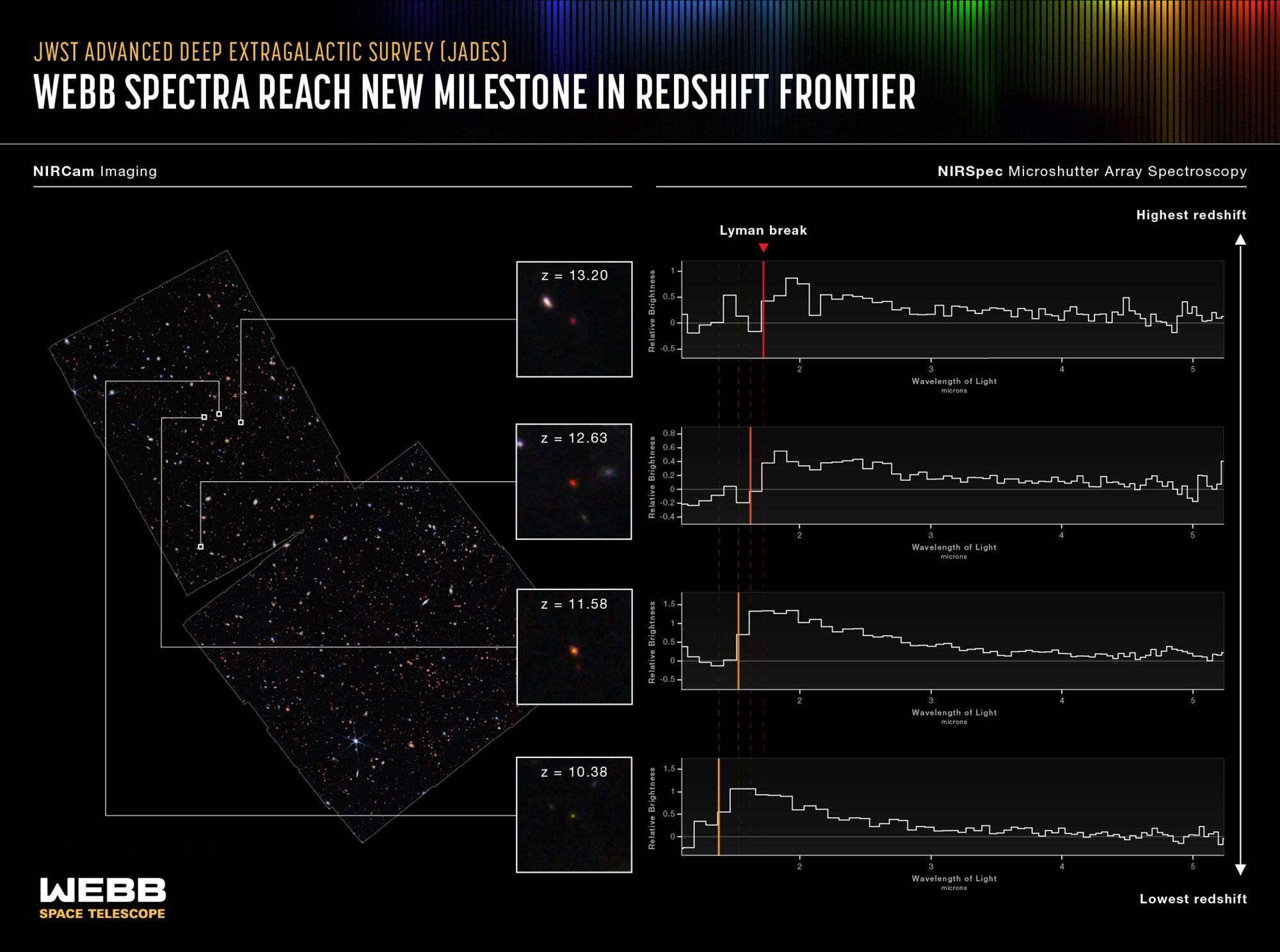Astronomers using JWST have confirmed the distance of some of the furthest galaxies yet. One of them was in place just 330 million years after the Big Bang – one of the very first galaxies that ever shone in our universe.
The galaxy is called JADES-GS-z13-0 and is now located 33 billion light-years from us (check out our explainer to understand how this works). The JWST Advanced Deep Extragalactic Survey (JADES) focused on the area in and around the Hubble Space Telescope’s Ultra Deep Field. The scientists confirmed this object and the distance of three more, not quite as far but still very distant.
There are few methods to measure how far a galaxy really is. One quick and easy method is to look at the colors: the redder it is, the further it is. That’s due to the expansion of the universe. As spacetime expands, the wavelengths of light traveling intergalactic distances are shifted towards the red end of the spectrum. This value is called redshift, and the color approach delivers the photometric redshift.

Spectroscopic redshift was measured using the Lyman break in the emission of these galaxies. Image credit: NASA, ESA, CSA, STScI, M. Zamani (ESA/Webb), and L. Hustak (STScI). Science: B. Robertson (UCSC), S. Tacchella (Cambridge), E. Curtis-Lake (Hertfordshire), S. Carniani (Scuola Normale Superiore), and the JADES Collaboration.
But some galaxies are just naturally redder, and this can cause confusion. For this reason, astronomers can look directly at the spectrum of galaxies and more precisely estimate the distance. This method is known as spectroscopic redshift, and while more precise it is also a lot more laborious.
The photometric redshift for these four galaxies was very close to the actual value obtained with the spectrum. Very good news for photometric approaches, which actually have potentially identified the furthest galaxy ever seen (although we’re waiting for spectroscopic redshift to confirm). So, this work tells us that these four galaxies are for sure some of the oldest objects in the universe we have ever seen, from when the cosmos was less than 400 million years old.
“It was crucial to prove that these galaxies do, indeed, inhabit the early universe. It’s very possible for closer galaxies to masquerade as very distant galaxies,” astronomer and co-author Emma Curtis-Lake from the University of Hertfordshire in the United Kingdom, said in a statement. “Seeing the spectrum revealed as we hoped, confirming these galaxies as being at the true edge of our view, some further away than Hubble could see! It is a tremendously exciting achievement for the mission.”
The data collected not only tell us the distance of these objects, but also shed light on their properties. These galaxies have a mass of about 100 million Suns and they are less than 100 million years old. They formed rapidly and quickly ionized the hydrogen gas around them.
“These are by far the faintest infrared spectra ever taken,” said astronomer and co-author Stefano Carniani from Scuola Normale Superiore in Italy. “They reveal what we hoped to see: a precise measurement of the cutoff wavelength of light due to the scattering of intergalactic hydrogen.”
The findings are reported in two papers awaiting peer review, which can be read here and here.
Source Link: JWST Confirms One Of The Furthest Galaxies Ever Discovered